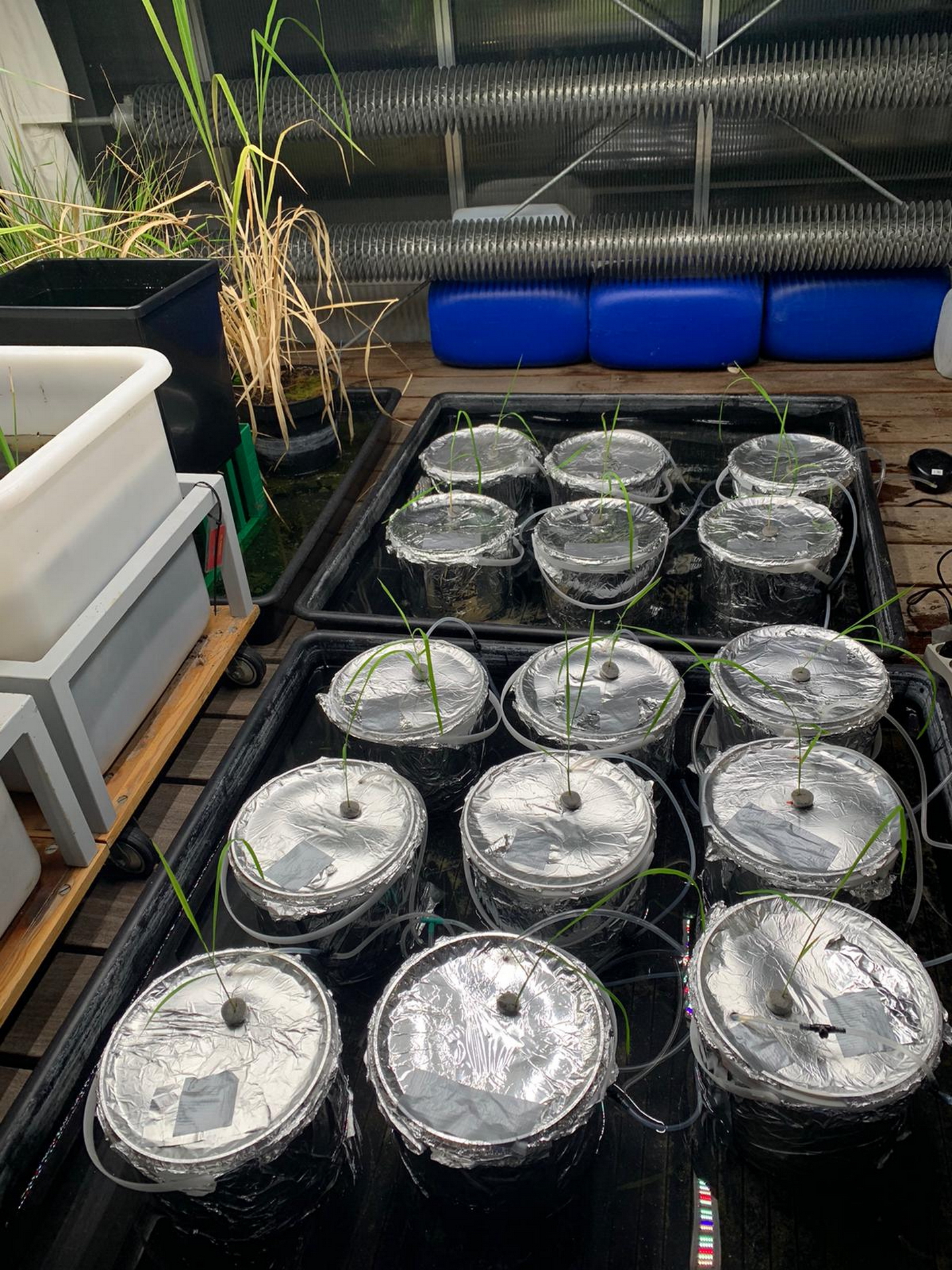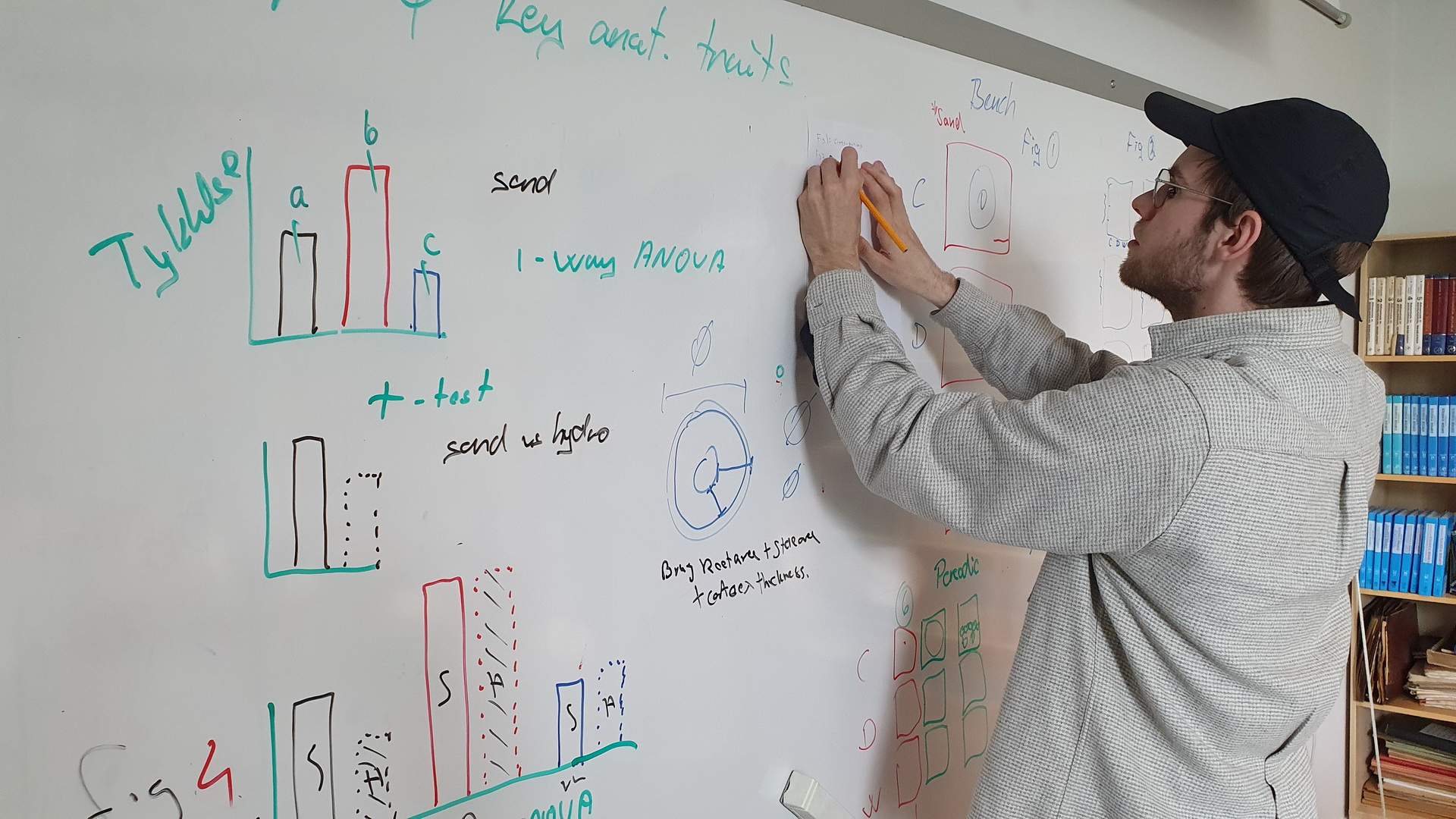Asbjørn is working hard to analyze data from his exciting experiment
Asbjørn has conducted both his BSc and MSc thesis work with us, and now he has completed most of the measurements so that only data analysis remains. We met to align all of his data and decide on the story telling in his thesis.
He designed a split pot system that allowing to cultivate rice with one part of the root system in a sand culture and another part in a hydroponic nutrient solution. In this way, he could test if root responses to abiotic stress imposed in the sand culture translate into a local response observed only in the roots within the sand or if some responses are systemic, i.e., also observed in roots in aerated nutrient solution. The abiotic stress was restricted to water stress – either too much or too little with a set of control plants grown at field capacity.
We are very excited to see what the data analyses show!

The experimental set-up shortly after transplantation into the novel split-root pots. The plants grew for some week before treatment was imposed with one set of plants exposed to dry sand, another to waterlogged sand and a third acting as control plants.
He designed a split pot system that allowing to cultivate rice with one part of the root system in a sand culture and another part in a hydroponic nutrient solution. In this way, he could test if root responses to abiotic stress imposed in the sand culture translate into a local response observed only in the roots within the sand or if some responses are systemic, i.e., also observed in roots in aerated nutrient solution. The abiotic stress was restricted to water stress – either too much or too little with a set of control plants grown at field capacity.
We are very excited to see what the data analyses show!

The experimental set-up shortly after transplantation into the novel split-root pots. The plants grew for some week before treatment was imposed with one set of plants exposed to dry sand, another to waterlogged sand and a third acting as control plants.

